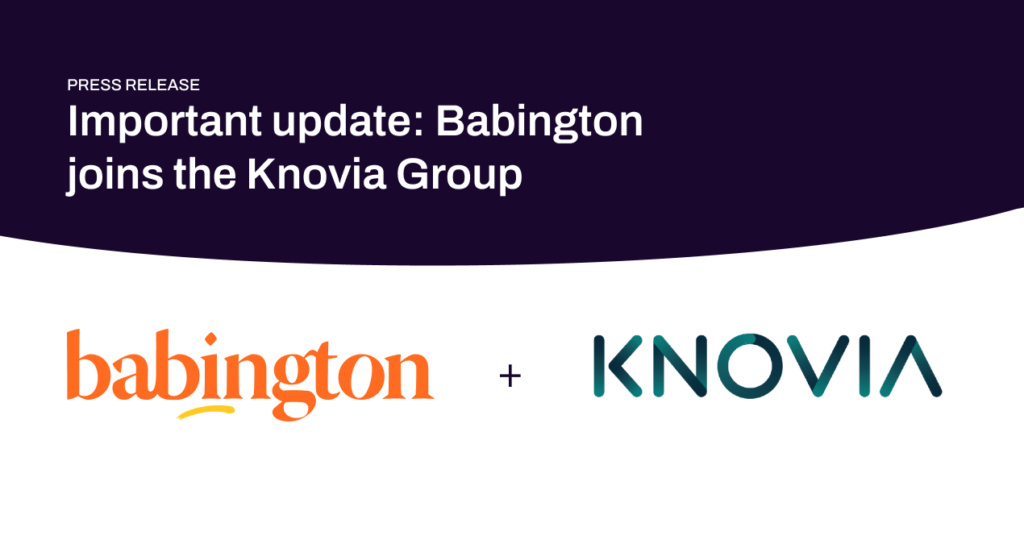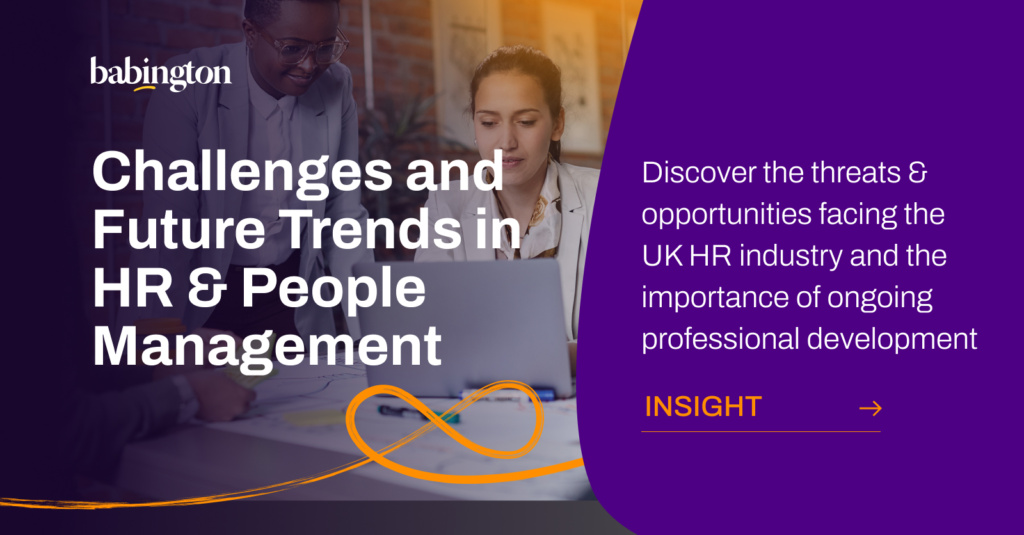What's the big idea?
AI is a hot topic right now. Here, our very own Learning Technology & Insights Director, Mark, shares his views on what advancements in this field really mean for learning.
“The introduction of technology into learning over the last 20 years has brought huge benefits for both employers and employees alike.
For businesses, the ability to upskill workers at scale at greatly reduced cost has been genuinely game changing. And for individuals, having the flexibility to decide how and when training is consumed has made learning far more accessible.
However, for all of the progress that has been made, there’s no getting away from the fact that digital learning (or ‘e-learning’) often continues to be based on a ‘sheep dip’ approach where every learner has the same experience. People within a certain job role or at a certain level go on the exact same learning journey – they consume the same content in the same way as all of their peers, irrespective of their current skills and knowledge, strengths and weaknesses, interests and aspirations.
The consequences of this are profound for both businesses and their workforces. Employees become disengaged with learning, regarding it as irrelevant, and a waste of time. Employers plough huge amounts of money into poorly targeted and ineffective training and then don’t achieve the impact that they expect from their investments.

For all of the progress that has been made, there’s no getting away from the fact that digital learning (or e-learning) often continues to be based on a 'sheep dip' approach where every learner has the same experience.

Mark Aberdour
Learning Technology & Insights Director

Bringing personalised and adaptive learning into digital
Research with our employers and learners has highlighted the massive demand for learning experiences that are adapted to each individual’s unique level of knowledge and experience. It has also highlighted widespread concern from employers around ‘unconscious incompetence’ across their workforces, where staff may not recognise their skills blind spots.
Understanding the need to solve this problem, at Babington we are focusing heavily on using AI technology to help workforces achieve competence through highly personalised, adaptive learning experiences.
It’s important to remember that personalised and adaptive learning aren’t new – they’ve been in existence since teaching began. It has always been the job of a teacher to assess the individual knowledge and capabilities of everybody in a classroom – whether that’s 6 highly skilled managers on a management course or 30 primary school children learning their times tables. Good teachers have always reacted and adapted to individual learner needs in a face-to-face environment.
In order to do this, teachers need to understand what each individual already knows so they can ensure that learners aren’t treading over old ground and are only studying things that will genuinely help them progress.
When it comes to digital learning, however, this ability to understand existing skills and knowledge, and to personalise learning accordingly, is still in its infancy. Of course, it’s far harder to achieve in a digital environment, given the scale at which learning is delivered, with potentially thousands of people taking a given course or module. Some e-learning tools have included basic methods such as branching scenarios (whereby if user selects a certain option or answer they’ll be branched to a certain page or topic) but the level of personalisation is very limited. In reality, not much has changed over the past ten years in e-learning delivery.
However, the introduction of AI into learning technology helps to directly tackle this problem and enable employers – and the L&D industry as a whole – to move towards a far deeper, richer level of personalisation.

Research with our employers and learners has highlighted the massive demand for learning experiences that are adapted to each individual's unique level of knowledge and experience. It has also highlighted widespread concern from employers around 'unconscious incompetence' across their workforces, where staff may not recognise their skills blind spots.

Mark Aberdour
Learning Technology & Insights Director

AI is the great enabler of adaptive learning
As with so many areas of technology, AI has completely re-imagined what is possible within digital learning. Using AI, employers and training providers can gather and analyse huge amounts of data about learners – their behaviours, experiences, strengths and weaknesses. And they can use this data to deliver personalised and adaptive learning at scale.
So, for example, let’s think about somebody who is taking an e-learning course on team leadership. An AI-driven adaptive learning tool is able to track how long the learner is taking on different screens when required to answer questions on the course content. The AI tool can understand which micro assessments the learner is struggling with based on how long it takes them to answer, and where the learner is more confident around their knowledge.
And because AI is able to build a clear picture of learners at scale, where the tool determines that a learner is struggling in a certain area or topic, it can analyse how other learners have succeeded from that point, and deliver the right learning to fill any knowledge gaps and get the individual back on track.
That is ultimately what AI can now do. It can get learners to the best learning outcomes in the shortest, most direct way, using its understanding of different pathways and analysis of what has constituted success for thousands of other learners. Already, this technology is delivering results far beyond the capabilities of traditional e-learning tools and, indeed, even the very best L&D teams!

I have no doubt that widespread adoption of AI will cause seismic disruption within the L&D industry over the next five years.

Mark Aberdour
Learning Technology & Insights Director

The impact of AI on the L&D industry
I have no doubt that widespread adoption of AI will cause seismic disruption within the L&D industry over the next five years. The e-learning authoring market has been dominated by 10 or so big players for several decades – with the main ‘off-the-shelf’ authoring tools used by organisations in almost every industry.
Forward-thinking e-learning practitioners have been extolling the virtues of ‘resources not courses’ for many years, but the one hour e-learning module has proved remarkably resilient in the face of so many good reasons to move towards more flexible and reusable content strategies. However, with the advent of AI adaptive learning tools, it looks like this market will finally be disrupted – and for the better.
This is largely because employers and training providers can now approach course and content creation in a markedly different way in the new AI-enabled environment. Rather than the traditional method, where a learning designer develops a one hour piece of e-learning, with AI you develop lots of little micro learning assets (each around two or three minutes) and these are interspersed with questions. The AI tool then optimises the right pathway for each learner and sequences the assets based on the leaner’s current knowledge and needs.
The traditional model where a learning designer decides the sequence in which the learner consumes content goes out of the window and the role of the learning designer changes substantially.
While the use of AI within learning is still in its infancy, it signals massive changes for the industry and those who work within it over the next five years. Highly individualised learning experiences will become the norm within many sectors and L&D professionals need to ensure they have the vision and skills to manage and lead this transformation.

AI will also help to tackle another age-old problem within L&D – how to measure and optimise the impact of learning investment on both the individual and the wider organisation.

Mark Aberdour
Learning Technology & Insights Director

AI will finally enable employers to optimise learning investment
AI will also help to tackle another age-old problem within L&D – how to measure and optimise the impact of learning investment on both the individual and the wider organisation.
Adaptive learning enables employers to get workers up to speed more quickly and this has huge benefits for organisations, particularly in industries that suffer from high staff turnover. Because learners are solely focused on what they actually need to know to perform their current and future jobs, employers can increase speed to competence in many roles by more than 50%. And this obviously means big efficiencies in overall learning investment.
Alongside this, AI is useful in ensuring that people are suited to the learning programmes they’re undertaking. For instance, within apprenticeships, there is a broad understanding that employers and training providers need to be testing apprentices as early as possible to make sure that they’re learning at the required speed and to identify any potential problems. With AI-driven adaptive learning, this type of assessment can happen when the candidate has just shown an interest in a given programme but not yet enrolled on it. The AI helps to determine whether the programme is a good match for the candidate and, where necessary, provide recommendations on alternatives that would be more suitable. This can prevent learners going down the wrong route, saving them a huge amount of time and effort. And it can ensure training providers are matching the right learners with the right programme, and that employers are optimising their learning investment.

AI-driven adaptive learning provides employees with a far richer, more engaging learning experience. Learning is delivered in a more personalised way, based on each individual’s unique requirements, strengths and weaknesses. People don’t need to spend time going back over things they already know, and they can focus on the skills and knowledge they need to develop and progress in their careers. They can get to where they want to go more quickly, adjusting their learning journey in real-time according to changing needs and opportunities.

Mark Aberdour
Learning Technology & Insights Director

Using adaptive learning to identify and fill skills gaps
With adaptive learning, employers are able to identify strengths and weakness in a given skillset at both the individual and organisational level.
For instance, within a team leadership training course, you might break the topic down into 10-15 key concepts that individuals need to understand and apply within their roles. Adaptive learning allows employers to measure at that conceptual level how complete an individual’s understanding of each of these concepts is and to identify areas of weakness or knowledge gaps. The AI tool can then target learning activities at those gaps to ensure the individual (quickly) develops a strong grasp of all key leadership concepts.
Employers are able to extrapolate this data upwards to an organisational level, so they suddenly have at their fingertips rich, real-time data around skills and knowledge within their workforces. Going back to the team leadership example, employers can now see at a macro level where staff are in relation to key concepts and identify where, as an organisation, they are struggling with leadership. They can then design interventions to address these weak spots, whether that’s through new digital content or maybe very targeted face-to-face group sessions.
For a long time, the talk within the L&D industry has been around the need to build skills frameworks for particular job roles and development pathways. And a lot of Learning Management Systems (LMS) have focused on being able to import these skills frameworks and then map content to them accordingly to build out learning programmes for employees. But the reality is that this top-down approach is incredibly difficult to make work. Very few large employers can genuinely claim to have implemented skills frameworks, mapped them rigorously to learning opportunities and rolled this out successfully across the workforce.
Adaptive learning offers a far more simple and manageable bottom-up approach, which uses AI to assess current skill levels within the workforce, to identify areas of weakness or skills gaps, and then to build personalised learning programmes based on high quality data and insight.
Perhaps most important of all though, AI-driven adaptive learning provides employees with a far richer, more engaging learning experience. Learning is delivered in a more personalised way, based on each individual’s unique requirements, strengths and weaknesses. People don’t need to spend time going back over things they already know, and they can focus on the skills and knowledge they need to develop and progress in their careers. They can get to where they want to go more quickly, adjusting their learning journey in real-time according to changing needs and opportunities.”
What is Babington doing to bring AI-driven personalisation to learning?
When we launched our new brand back in July last year, we introduced the idea of the ‘3P’s – potential, personalisation, and potential. Babington is on a mission to help organisations and individuals unlock their potential and enhance performance through deeply personalised learning experiences.
Against this backdrop, we are excited to be working on a pioneering approach to AI-driven learning in the funded space.
We are already deploying cutting-edge technology within our Team Leader/Supervisor and Operations Departmental Manager apprenticeships to enhance, augment, and better-personalise learning content for optimal outcomes. If you’re interested in being part of these programmes, follow the link below.
AI-driven apprenticeships are already here. Interested?
Enquire now






